Why Does My Dog Spin In Circles On His Bottom? [Explained]
Ever watched in bewilderment as your dog performs a whimsical dance, spinning in circles on his bottom? You might chuckle at the spectacle, but then comes the inevitable question: “Why is he doing that?”
While this quirky behavior may seem amusing or even adorable, it’s often a sign worth exploring. Is it just a harmless quirk or could it be indicative of something more serious?
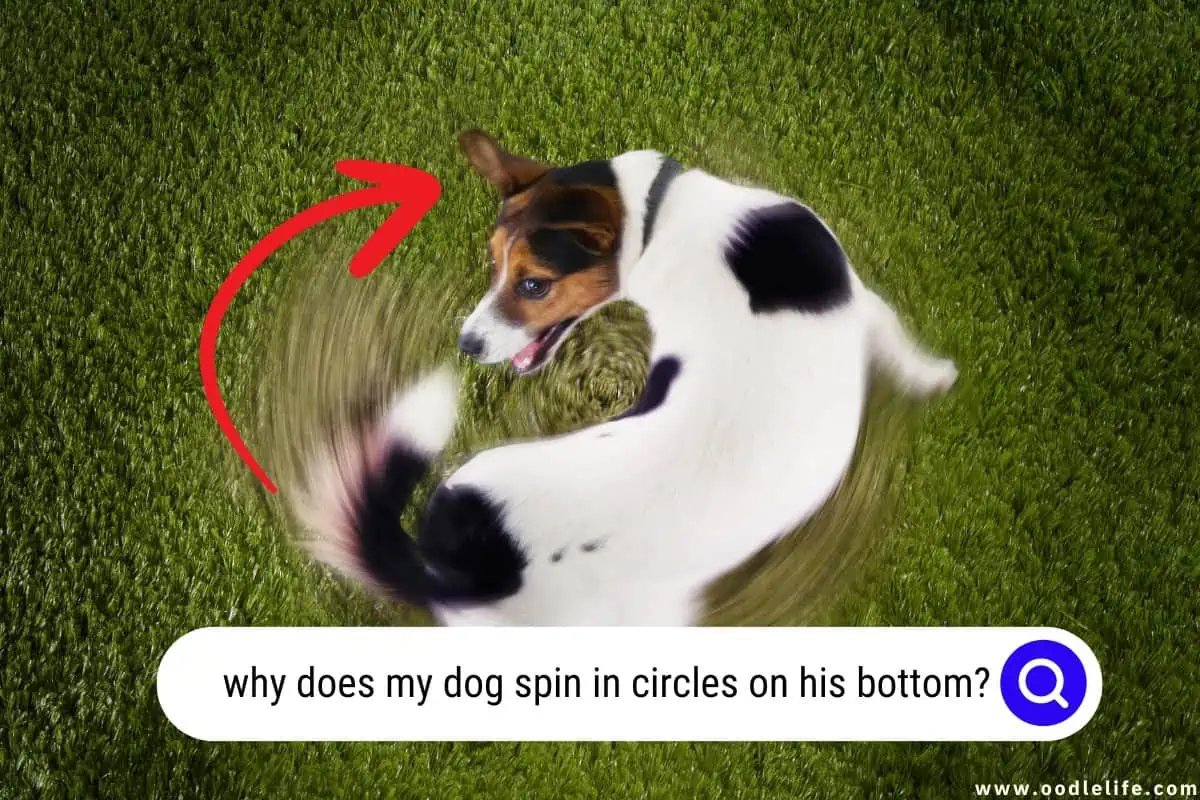
Let’s dive into the various reasons behind this fascinating canine ritual to find out what’s really going on.
History and Evolution
Dogs spinning in circles on their bottoms can be traced back to their evolutionary history. Before domestication, dogs lived in the wild and had to create their own sleeping areas by patting down tall grass or leaves. Spinning around allowed them to flatten and arrange their “beds” to make them more comfortable.
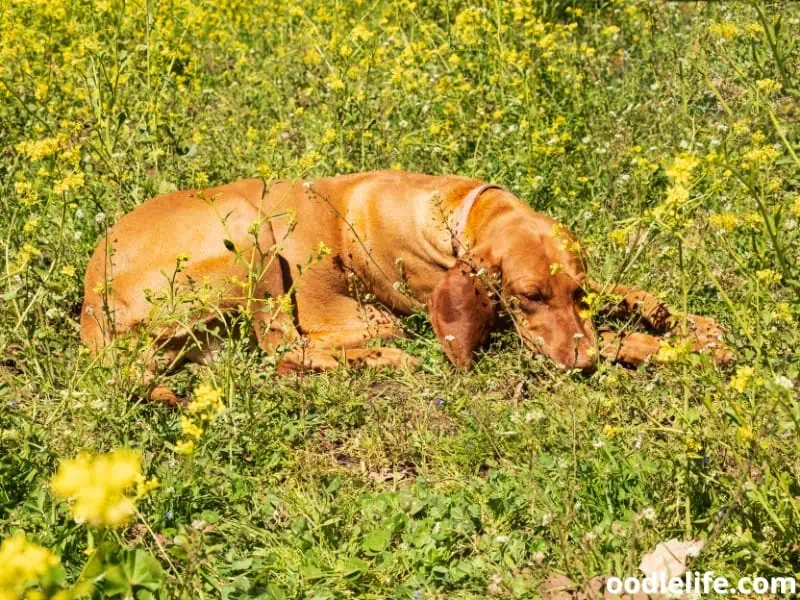
Though domesticated dogs now have cozy homes, this behavior is still ingrained in their instincts.
Canine Cognitive Dysfunction
Sometimes, spinning in circles is a sign of Canine Cognitive Dysfunction (CCD), a condition similar to Alzheimer’s in humans. Older dogs with CCD experience cognitive decline, which can manifest as repetitive or unusual behaviors like spinning in circles. If your dog’s spinning seems excessive or obsessive, it’s a good idea to consult with a veterinarian to rule out CCD or other health issues.
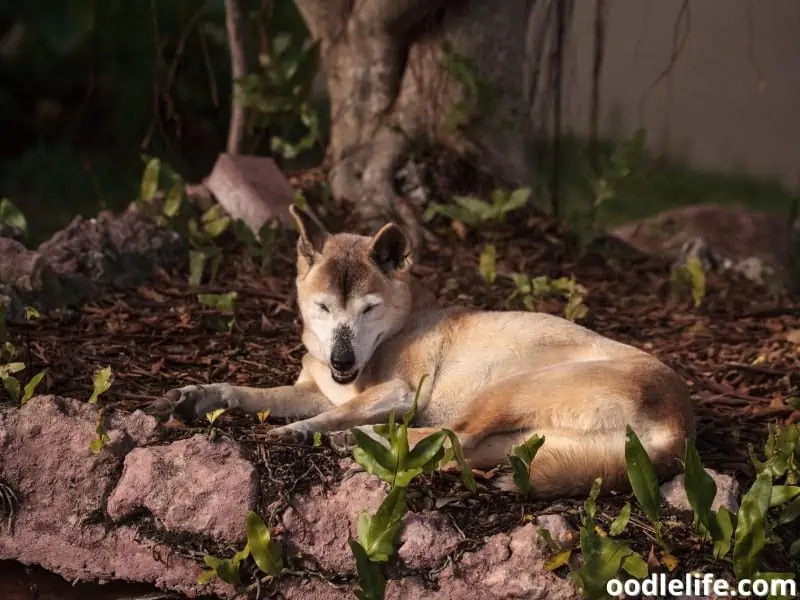
Seizures and Neurological Disorders
In some cases, spinning in circles can indicate seizures or neurological disorders, such as epilepsy. These conditions can cause dogs to have involuntary muscle movements or suffer from disorientation, leading them to spin or walk in circles. If your dog’s spinning is accompanied by other symptoms like drooling, shaking, or loss of consciousness, it’s crucial to seek veterinary attention immediately.
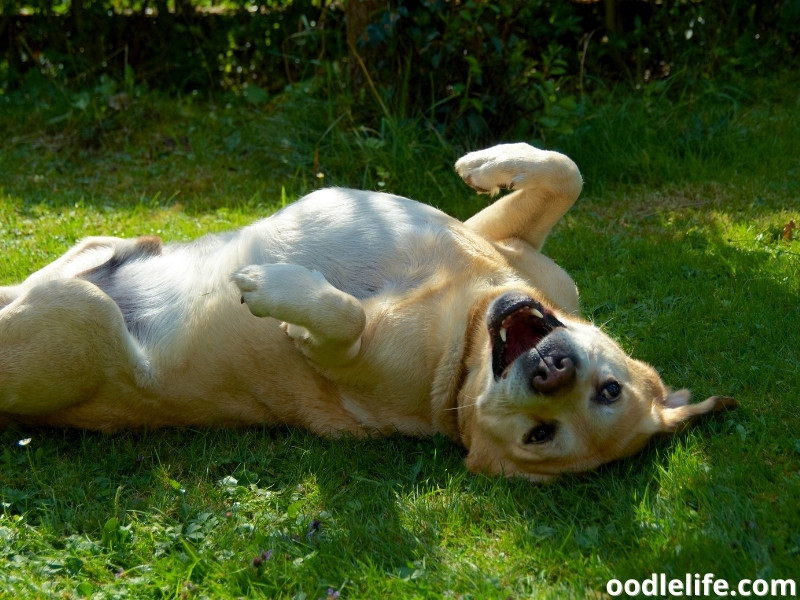
To sum it up, dogs spinning in circles on their bottoms can be attributed to various causes, from instincts to health concerns. While some spinning might be harmless and related to their history, excessive or concerning spinning should be addressed by a veterinarian.
Causes of Dog Spinning
Dogs spin in circles on their bottoms for various reasons. Sometimes, it’s just a matter of quirky behavior or sheer excitement. When you take your pup for a walk or engage them in energetic play, they might spin in circles to release their built-up energy.
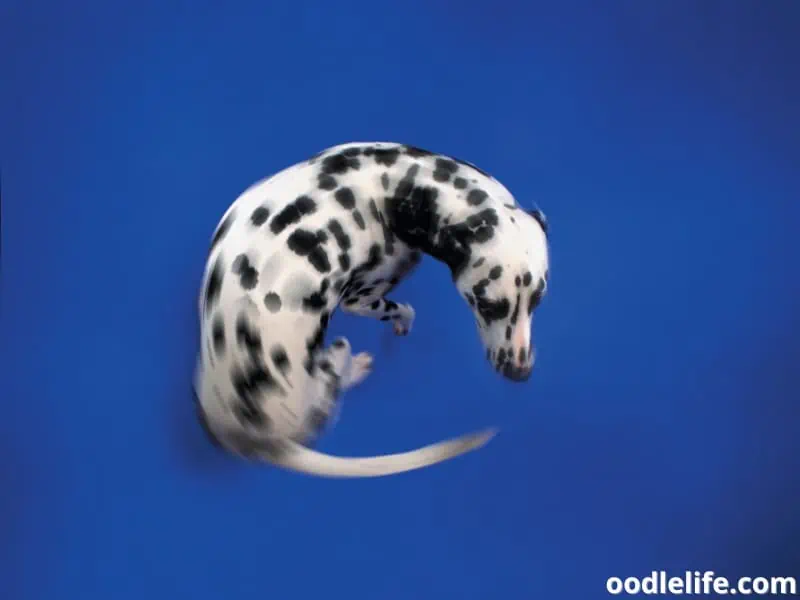
This can also be traced back to their ancestors, when circling was a tactic used to keep predators at bay or to sniff out the environment for food or a mate.
On a more serious note, compulsive circling might signify a medical issue. For instance, scooting often indicates that your dog is dragging its bottom along the ground due to discomfort. This could result from worms, which cause itchiness, or even sore anal glands that might require treatment.
In such cases, a quick visit to the vet would help to rule out these issues.
Furthermore, circling in dogs may be a symptom of neurological disorders such as brain tumors, inflammation of the brain, or hydrocephalus (fluid buildup in the brain). Seizures and strokes could also cause a dog to walk in circles as their muscles and brain struggle to coordinate movements. If you notice your dog circling excessively or showing other signs of discomfort, consult your veterinarian for an accurate diagnosis.
An MRI might be necessary for a definitive prognosis.
Lastly, remember that humor has its place even when discussing dog behaviors. Although it might make for a funny anecdote at the dog park, be sure to pay close attention to your dog’s well-being. In the end, it’s crucial to distinguish between harmless play and a potential health issue.
So, whenever you see your dog spinning like a furry tornado, take a moment to assess the situation and make sure they’re in good shape. Keep that leash handy, and happy spinning!
Scooting Behavior
Ah yes, the infamous scooting behavior – a dog’s peculiar way of expressing that something is bothering them down yonder. Have you ever wondered why your canine companion suddenly decides to spin in circles on their bottom like a furry breakdancer? Well, let’s explore some of the reasons behind this bizarre behavior.
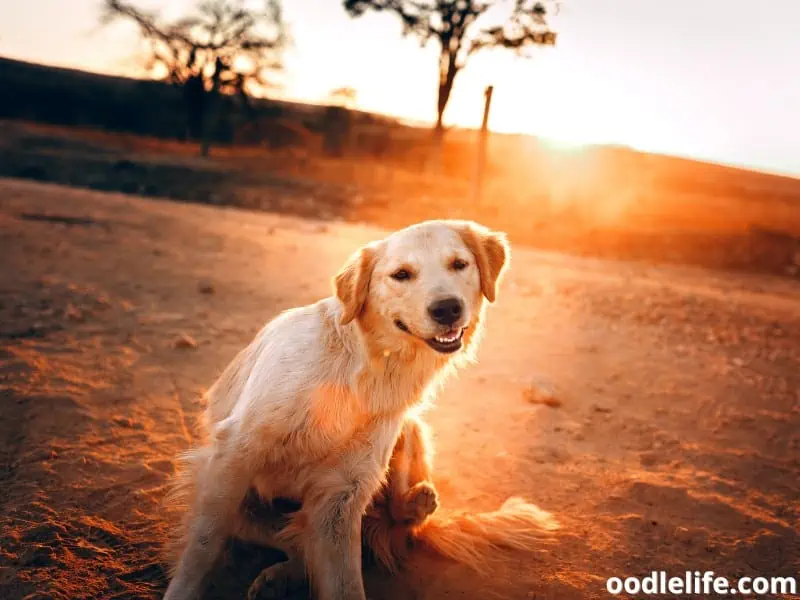
First and foremost, scooting usually indicates that your dog is experiencing discomfort in their nether regions. One common culprit? Poop.
That’s right – sometimes, after a bowel movement, a small chunk of poop may get stuck to your dog’s rear end. This can cause irritation and may prompt your dog to scoot around to get that stubborn cling-on to drop.
Another thing to consider is that your pooch might be dealing with some anal gland issues. You see, dogs have these two little sacs, located right below their anus, which excrete a smelly, oily substance during bowel movements. The substance plays a role in marking territory, but sometimes the glands can become overfull, infected, or even impacted.
When this happens, your dog may try to relieve the pressure by spinning in dizzying circles on their bottom.
Now, if you find that scooting is becoming a recurring performance in your dog’s repertoire, it’s best to consult your trustworthy vet. They can examine your dog, rule out any serious underlying conditions, and provide guidance on how to proceed. Remember, though, it’s always wise to check for the seemingly insignificant poop residue before consulting the professionals.
Nobody wants to be remembered as the one who rushed to the vet with poop stuck to their dog’s derrière.
In conclusion, scooting behavior in dogs is generally an indication of discomfort, most commonly caused by lingering poop or anal gland issues. So the next time your pup spins in circles on their bottom, you can remain confident, knowledgeable, and neutral, knowing the likely reasons behind their whirling antics. Just don’t forget to keep a poop bag handy – you never know when that awkward residue might make a cameo appearance.
Behavior Modification
Sometimes, our furry friends pick up odd habits that leave us scratching our heads and wondering why. Spinning in circles on their bottom is one such peculiar behavior. But don’t worry, dog parents!
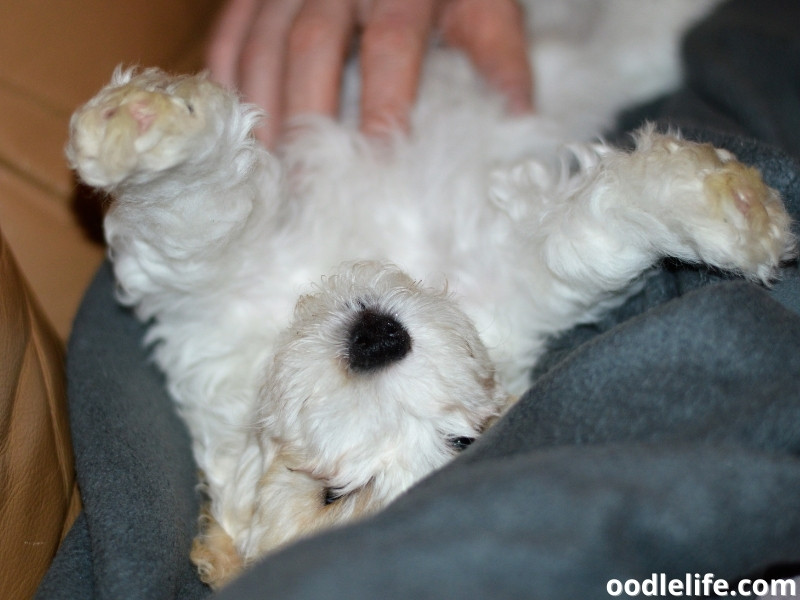
We can address this through—drumroll, please—behavior modification.
Behavior modification is a fabulous tool that can help mold our canine companions into model petizens. Imagine it as a gentle nudge (or wag) in the right direction. To get things rolling, showering your pup with love and attention is key.
Remember the old saying, “you catch more flies with honey than vinegar?” Turns out, it works with dogs, too.
Here’s a simple, bite-sized approach to help your dog ditch his dizzying dance routine.
First, pay close attention to when your dog starts spinning, and note any patterns or triggers. Are they spinning after eating? Before going on a walk?
Let’s say your dog spins right after they devour a delicious bowl of kibble. Next time, try distracting them with a game of fetch or a quick belly rub before they start spinning.
Helping your dog find an alternative behavior can be the gamechanger here. Dogs are smart cookies, and they can easily pick up on new habits when rewarded for them. So, when you see your furry friend embrace their inner circle-dweller, gently interrupt and redirect them.
For instance, you could encourage them to sit instead of spin. And, as always, reward their good behavior with a treat, praise, or that precious love and attention they crave so much.
Now, don’t get discouraged if your pooch isn’t turning over a new leaf overnight. Rome wasn’t built in a day, and neither are perfectly polished pups. Consistency, patience, and a dash of humor will go a long way in helping you and your dog navigate this whirlwind adventure.
So, suit up and get ready to spin your dog’s behavior in the right direction!
Pet Health and Insurance
If you’ve ever watched your furry friend spin in circles on their bottom, you might wonder if this is just a quirky habit or if there’s a more significant reason behind it. It’s essential to keep an eye on your pet’s health and be prepared with proper insurance coverage.
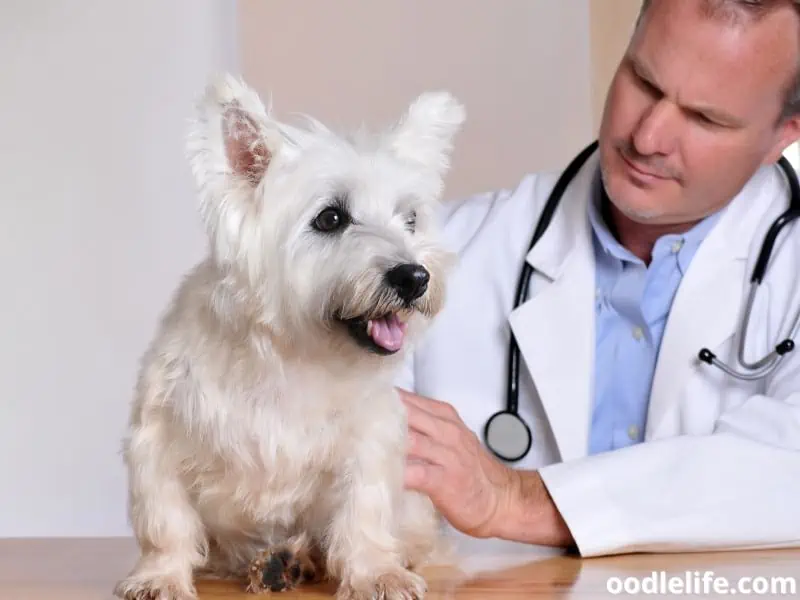
In many cases, dogs spin on their bottoms due to anal gland issues. These glands can become impacted, infected, or even abscessed, causing your pup quite a bit of discomfort. Just like humans, dogs need proper health care to address these problems.
A good pet insurance plan can help cover the cost of veterinary visits and procedures, ensuring your beloved companion receives the best care.
Additionally, doggy spinning circles might be caused by other health issues such as allergies or parasites. A quick trip to the vet can usually help determine the problem – and good thing too, the sooner it’s diagnosed, the better the prognosis. Staying vigilant and addressing your pet’s needs before they escalate is crucial not only for their well-being but yours too!
After all, a healthy, happy pup makes for a healthy, happy owner.
Now, you might be thinking, “Pet insurance? That’s ridiculous!” However, before you brush off the idea, consider that pet insurance can be beneficial in case of unexpected illnesses or accidents.
With the peace of mind that comes from having insurance, you can focus on what truly matters: helping your dog stop spinning in circles and bring the tail-chasing joie de vivre back to their lives.
To make an informed decision, it’s essential to research different pet insurance providers and their coverage options. Just like human health insurance, plans for pets can range from the bare basics to comprehensive policies. In the end, finding the right plan depends on your pet’s needs and your budget.
So, the next time you find your dog spinning in circles, take a moment to consider their health and the importance of having insurance. After all, no one wants their precious pup navigating life’s obstacles like a furry Tasmanian devil.